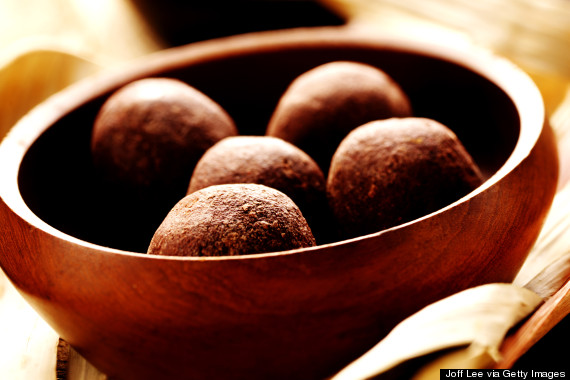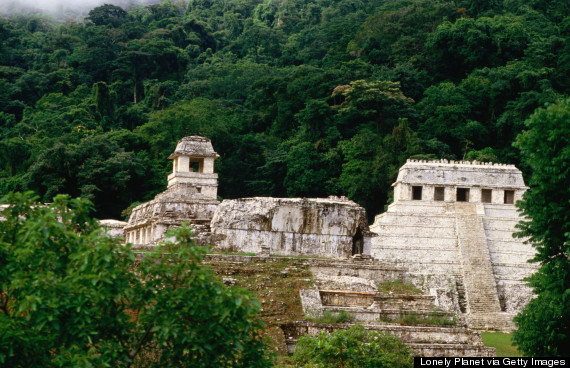What The Ancient Maya Can Teach Us About Living Well
In the modern world -- when technological advances and information overload have left many of us with a desire to get back to basics -- the need for ancient wisdom may be more important than ever before.
Ancient health and healing secrets are making something of a resurgence, and for good reason. The ancient Greeks asked the big questions about what it means to live a good life, and some of their theories on ethics and happiness have been backed by modern science. Thousands of years ago, Indian sages developed a system for stilling the thoughts that's now practiced across America. The early Maya civilizations, too, developed healing systems that have influenced holistic healthcare to this day.
The Maya civilization thrived for six centuries through areas that are now Yucatan, Quintana Roo, Campeche, Tabasco, and Chiapas are in Mexico, as well as parts of Belize, Honduras, El Salvador and Guatemala before collapsing mysteriously around 900 AD. The Mesoamerican civilization -- advanced in its art, architecture and mathematics -- may not have survived, but many of their secrets to good health, healing and living well are still alive to this day.
Here are eight things the Maya can teach us about living well.
They ate chia seeds.

Chia -- derived from the Mayan word for strength -- was a dietary staple of the ancient Aztecs and Mayas, and one that kept them healthy and energized. In addition to eating the seeds regularly, the Maya also used them in religious ceremonies.
The superfood is high in protein and fiber, and it's loaded with healthy omega-3 fatty acids, which are essential for maintaining goodcognitive function and may even play a role in preventing cancer.
The body and soul were treated as one.

For the Maya, health was all about balance -- and disease, on the other hand, was seen as the manifestation of imbalance. To cure these imbalances, the Maya incorporated plants and herbs, their own forms of massage and acupuncture, hydrotherapy and prayer into theirhealing procedures.
The holistic healing tradition of the Maya was a medico-religious one, meaning that they treated both ailments of the body and of the spirit, and recognized their interconnection. The Maya healers sought primarily to balance the flow of ch’ulel, or life-force, in the body, making Maya medicine very similar to traditional Chinese medicinewhich also seeks to direct the body's life-force (qi). For the Maya, this ch'ulel (which forms the first principle of Maya medicine) is a sign of the interconnection of body and soul, which forms the second of the six principles.
"Ch'ulel represented that everything was linked and unified," wrote Bonnie Bley in The Ancient Maya and their City of Tulum. "The physical and spiritual worlds were at opposite ends of a continuum surrounded by medicine which aided the spirits in the healing process."
Clearly, they were on the right track: An extensive body of researchhas suggested that emotional health can have a significant impact on physical health.
Healers were central to the culture.

In the Maya civilizations, the healer, or h’men, played a central role in the community. They possessed an extensive knowledge of the healing remedies, and used them to restore the individual in ill health to a state of equilibrium. The indigenous healing tradition has been passed down orally for many generations and the descendentants of some Maya healers still practice to this day, largely in the Yucatan region of Mexico.
The healers played an important role in the community, particularly in the Yucatan and Campeche cultures.
The indigenous healer is, in many cases, a traditional authority or community leader, and in general is recognized as a servant of the community," write Hernán García, Antonio Sierra and Gilberto Balam in Wind In The Blood: Mayan Healing And Chinese Medicine. "To the present day these healers are essential to their communities. The recognition they receive, despite changing social conditions, allows them to continue exercising their medical practice."
They ate chocolate. Lots of it.

As long as 2,600 years ago, the Maya may have been regularly consuming chocolate. Archeologists found residue of chocolate on an ancient teapot, and now believe that the Maya were drinking chocolate for up to 1,000 years earlier than was previously thought. The Maya incorporated the ancient superfood cacao into their diet regularly -- some say they consumed cacao at every meal -- to maintain good health.
"It was the beverage of everyday people and also the food of the rulers and gods," Jonathan Haas, curator of the "Chocolate" exhibition at the Field Museum in Chicago, told National Geographic. "In fact, the scientific name for the cacao tree is Theobroma cacao -- 'food of the gods.'"
It may have played a significant role in their good health. Cacao and cocoa products are packed with flavanols, an antioxidant shown to benefit heart and brain health, which is also found in red wine, berries and teas. Cocoa is high inmagnesium, a mineral that's important for many bodily processes, and is also rich in calcium, iron, copper, zinc and potassium, not to mention loaded with fiber.
They believed in living by natural cycles.

A strong belief in natural cycles of birth and death helped to bring meaning and structure to Maya lives, and formed the basis of their religious beliefs.
"The Maya believed deeply in the cyclical nature of life –- nothing was ever 'born' and nothing ever 'died' -– and this belief inspired their view of the gods and the cosmos," according to the Ancient History Encyclopedia.
The many rituals and ceremonies of the Maya were generally tied to these cycles, which were embodied by the Maya maize god. According to Maya myths, the maize god was decapitated at the time of harvest and reborn at the beginning of the growing season. The myth of the maize god helped them to explain the changing of the seasons and the annual return of maize, their most important crop.
“The Mesoamerican worldview was constantly in motion, in cycles of birth and death, termination and regeneration," anthropologists William Duncan and Charles Hofling wrote in a paper published in Ancient Mesoamerica in 2011. "Everything that came to be needed to be animated or ensouled, and would eventually be terminated.”
Spiritual belief like the kind that the Maya lived by comes with a number of possible health benefits, including lower stress levels,improved mental health and maybe even increased longevity.
They were one of the earliest cultures to keep pets.

In the Archaic period, the Mayadomesticated dogs and turkeys to coexist with them as pets. In parts of Guatamala populated by the Maya, archeologists found turkey fossils with clipped wings, suggesting that they were kept in captivity. While the turkeys may have been bred for food, dogs were often used as companions,according to archeologist and Maya researcher Robert Sharer.
The health benefits of animal companions are many: Pet ownership has been linked to decreased blood pressure and cholesterol levels, as well as boosts in mood and decreased loneliness. Having a dog in the house has even been shown to improve children's health, reducing their risk of developing the common cold.
They had sophisticated plumbing.

Recent research suggests that the ancient Maya likely had sophisticated enough plumbing to provide them with running water, fountains and toilets. While it was previously thought that the ability to generate water pressure came when the Spaniards conquered the area, scientists found that the Maya center in Chiapas, Mexico had an elaborate system of managing water.
But these plumbing systems weren't purely functional: Being surrounded by water may have boosted their well-being. Living near a body of water has been linked with increased health and well-being, and for thousands of years, the healing power of water has been harnessed through hydrotherapy.
"I actually think that the creation of water pressure at Palenque was a sign of wealth," Pennsylvania State University archaeologist Kirk French told LiveScience. "It was definitely not necessary. They had water everywhere. The Maya of Palenque were never more than 150 meters (492 feet) from a source of water. Water pressure technology would have been useful through the display of power and knowledge, similar to how priests and shamans used astronomical events."
Their family ties were strong.

In the Maya culture, family was important. It wasn't so much about the clan or kinship as it was about the household, which could be either single or multiple family units. The multiple-family household is a part of the cultural tradition, some scholars have suggested.
"Within historical multiple-family households are nuclear families linked by a wide variety of kinship ties -- parents and sons, parents and daughters, two or three brothers or sisters, cousins, and maternal or paternal uncles and aunts," cultural anthropologist Richard Wilk wrote.
Strong family and community ties have been linked with increased well-being and boosted immunity, as well as enhanced longevity.
